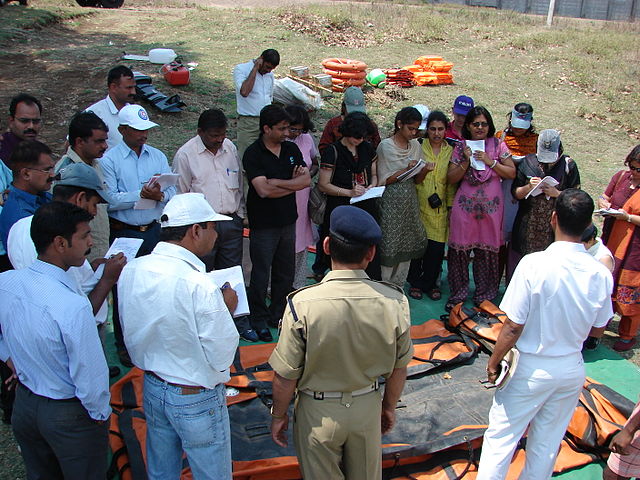India is vulnerable to a large number of disasters. According to the National Disaster Management Authority, more than 58.6 per cent of the landmass of India is prone to earthquakes of moderate to very high intensity; over 40 million hectares (12%) of its land is prone to floods and river erosion; close to 5,700 km, out of the 7,516 km long coastline is prone to cyclones and tsunamis; 68% of its cultivable area is vulnerable to droughts; and, its hilly areas are at risk from landslides and avalanches. Due to the disaster risk profile of India, and increasing frequency of disasters it is extremely important that everyone in this country is aware of the disaster risks, and prepared to cope with and respond to disasters.
CARE India responds to humanitarian emergencies and meets immediate survival needs of the affected population. Efforts are being made to address the specific needs of women, girls, men and boys from the most marginalised and vulnerable sections of the community in a timely and effective manner. Regular internal reviews of systems and procedures and designed for organisational preparedness to respond. These allow for the deployment of resources in a structured and deliberate manner to ensure that potential loss of life and assets are avoided.
With the adoption of Internet of Things across sectors, Aeris Communications launched a solution developed for the social/not for profit sector. Among other benefits it helps promote efficiency, operational transparency and better engagement between all stakeholders at all times. It provides aid from a single source including disaster relief and reconstruction support to long-term development cooperation projects with local partner organisations.
SEEDS along with Centre for Research on the Epidemiology of Disasters (CRED) released a report titled ‘Decoding the Monsoon Floods’. The report is based on disaster data from Bangladesh, India, Nepal and Myanmar between 2000 and 2017.
According to the data published in the report, floods rank top on the list of devastating disasters in the region. The report indicates 361 flooding events (from both floods and cyclones) across these four countries over the last 18 years. This makes up 3/4th of the total disasters in this part of Asia.
Dr. Manu Gupta, Executive Director, SEEDS underscored the need for use of data for informed decision making by governments, civil society, and the public that is at risk. He said, “Business as usual is not an option when humanitarian needs are increasing and the gap between need and aid widening. Informed by the kind of revealing data that we are discussing today, disaster management plans need to be disruptively innovative. They need to be able to fill this gap within available resources, and innovations must be led by what works at the community level.”
The report reveals that more than 2200 cities and towns in India are located in districts which have witnessed at least 11 floods in the last 18 years. One of the findings states that 56% of India’s planned smart cities fall in districts reporting a high number of flood events, signifying the scale of investments that need to be secured against future risks.
Discussing the findings of the study, Dr. Anshu Sharma, Co-founder and Mentor, SEEDS, said, “Since 2000, India has faced 215 flooding events both from floods and cyclones. This accounts for 77% of all disaster events. Assam is the most flood-prone state, with areas like Lakhimpur reporting over 30 flood events within this period. Even known drought-prone areas of Gujarat and Rajasthan have witnessed more floods than the country’s average in the last 18 years. Unpredictability, urbanisation and invisibility of flood risk are major concerns that need to be addressed urgently.”
The report states that when the scale is this huge, the nature of the losses is informal and resources at hand are limited, coping practices at the community level are very beneficial. To support this view, the report suggests that investment in supporting and scaling community innovations on flood resilience can have very significant impacts.
Thank you for reading the story until the very end. We appreciate the time you have given us. In addition, your thoughts and inputs will genuinely make a difference to us. Please do drop in a line and help us do better.
Regards,
The CSR Journal Team
Subscribe


